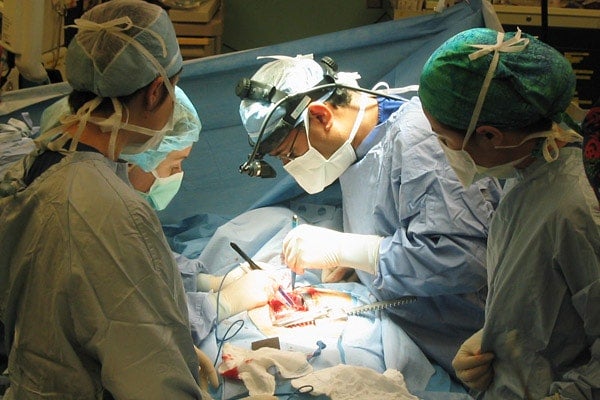
Improving lung transplant surgery around the world
Published: October 2, 2012
Professor Shaf Keshavjee still remembers the day in 1983 when he heard exciting news on his car radio: University of Toronto surgeons had performed the world’s first successful lung transplant at Toronto General Hospital.
“I thought, that’s cool—I would never have thought you could transplant lungs,” recalls Keshavjee, a U of T medical student at the time.
Three years later, another world first occurred—a double-lung transplant—and Keshavjee was there, as a junior U of T MD resident assigned to thoracic surgery at Toronto General Hospital.
“History was being made and I was a part of it,” he says.
Keshavjee has been part of many other firsts since then.
Keshavjee, who received his MD in 1985 and his MSc in 1990 is now a professor in U of T’s Department of Surgery, Director of the Toronto Lung Transplant Program and Surgeon-in-Chief at University Health Network (UHN). He has performed more than 300 transplants to date, most of them double-lung, and is a driving force behind innovations that have transformed lung transplantation globally.
His development of a lung preservation solution—which boosted the patient survival rate for single-lung transplants from 50 per cent to over 90 per cent—is now a world standard.
Keshavjee says U of T’s Surgical Scientist Program facilitates such innovation.
“One of the great things about the University is that surgeons can take time out of their clinical work for science. After spending two years conducting research from 1987 to 1989, I was able to develop the preservation solution in the lab and translate it into clinical practice,” he says.
Keshavjee is glad he chose U of T, despite receiving two open scholarships from elsewhere.
“U of T gives one the confidence and ability to play on the international stage, to do things that are truly shoulder to shoulder with the world’s best institutions.”
Since his time as a trainee at U of T, Keshavjee has also developed a type of gene therapy to make donor lungs less prone to rejection by the immune system, and figured out a way to improve gene therapy too. The result is an ex-vivo technique—basically a breathing lung in a box—that allows an organ to remain outside the body and recover at normal body temperature.
Currently, 85 per cent of donor lungs are not used because it’s uncertain whether the human lung will work, says Keshavjee, who is also the Director of Latner Thoracic Research Laboratories and holds the James Wallace McCutcheon Chair in Surgery at UHN. But with the ex-vivo technique, clinicians can confirm that a lung will work and, if there’s a problem, use targeted gene and cell therapies to repair it, he says.
Keshavjee has performed 53 lung transplants using the method, which is now being adopted by surgeons around the world. The hope is that this approach will triple or quadruple the number of viable transplants.
“There are many people living full, productive lives because of what we do,” says Keshavjee. “But what’s also gratifying is taking transplant surgery to the next level and asking, ‘how can we do this better?’”



